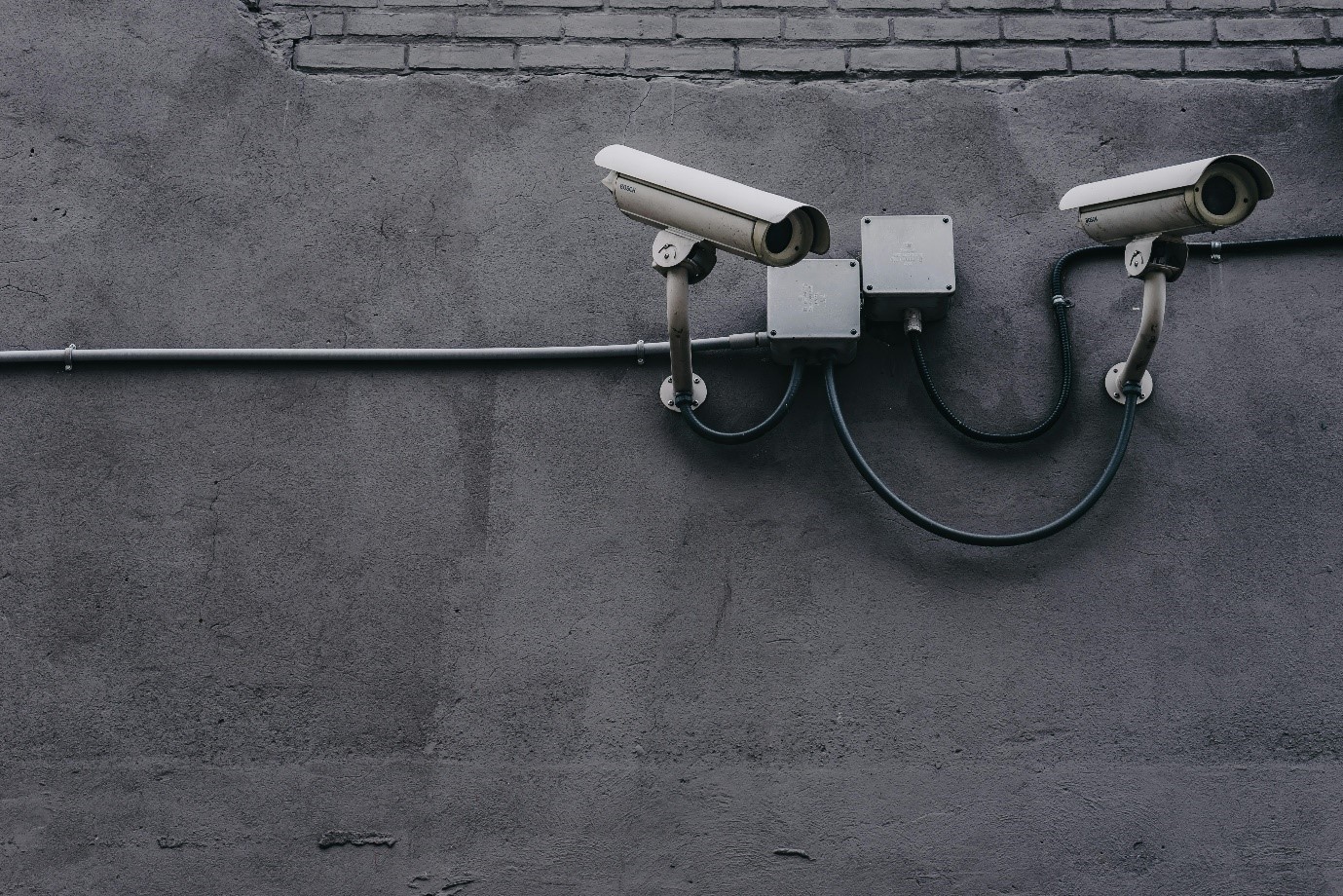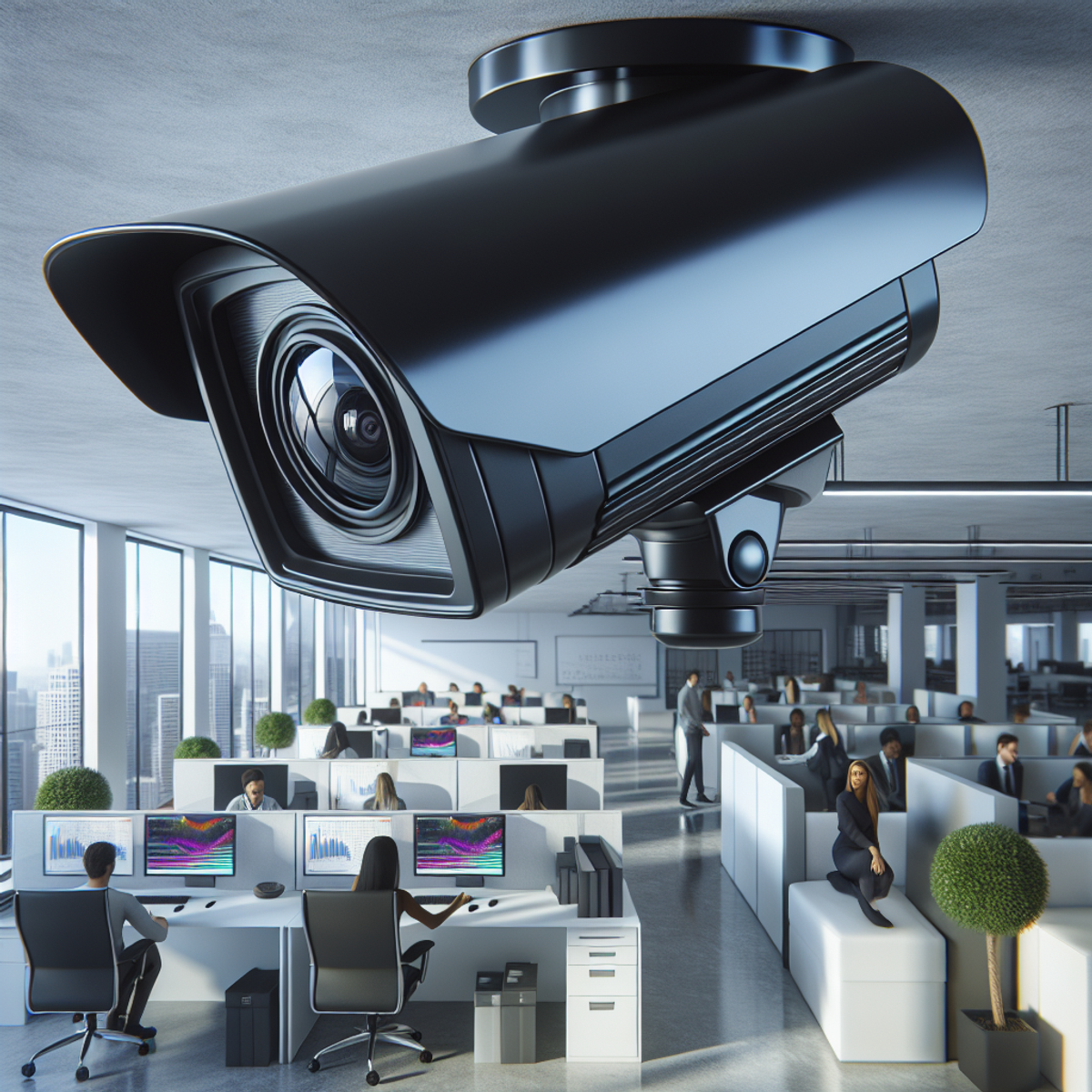Commercial security refers to the strategies, systems, and protocols that businesses use to protect their assets, personnel, and premises from various threats. These measures aim to prevent theft, vandalism, and unauthorized access, creating a secure environment for employees and customers.
Commercial security is crucial for businesses because:
- It acts as a deterrent against criminal activities.
- It helps businesses avoid potential financial losses.
In this article, you will discover why investing in commercial security is not just an option but a necessity for businesses today. With the increase in both physical and cyber threats, it becomes essential for business owners to strengthen their establishments with robust security systems.
You will learn about effective strategies that can significantly enhance the safety of your business premises and provide peace of mind for everyone involved.
The Key Benefits of Prioritizing Commercial Security
When you prioritize commercial security for your business, there are many significant benefits. Here are some key advantages:
- Deter Criminal Activities
Visible deterrents like surveillance cameras and sophisticated alarm systems are critical in preventing unauthorized entry and potential theft.
- Reduce Insurance Costs
Insurance companies often offer lower premiums to businesses that invest in comprehensive security solutions, acknowledging the reduced risk of claims.
- Enhance Employee Productivity
Employees perform better knowing they are in a secure environment. This peace of mind translates into increased productivity and job satisfaction.
- Prevent Theft
By enforcing strict access control policies and employing advanced inventory management systems, businesses can significantly reduce the risk of both external theft incidents and internal employee theft.
- Attract Customers
A perceivably safe environment is more likely to attract customers, who prefer doing business in locations where they feel secure.
- Reinforce Business Reputation
A strong commitment to security reflects positively on a company’s reputation. It builds trust among customers and sparks investor interest, showcasing the business’s dedication to high safety standards.
The strategic implementation of these measures not only secures your assets but also cultivates an atmosphere of trust and reliability between you, your employees, your customers, and your stakeholders. Moving forward, understanding how to address both physical and digital threats will further solidify your establishment’s defense mechanisms.
Understanding the Dual Nature of Commercial Security: Physical and Digital Threats
In the world of commercial security, businesses face two types of threats: physical and digital. To protect your business, it’s important to know about these two aspects of commercial security and take appropriate action to reduce any potential risks.
Protecting Against Physical Threats
Physical threats in workplace security can come in different forms, such as theft, vandalism, and trespassing. You can effectively deal with these threats by:
- Installing visible security measures like surveillance cameras, alarm systems, and strong access control systems.
- Conducting regular security audits to check how well your current security systems are working and find any weaknesses that need fixing.
It’s also essential for businesses to train their staff on how to handle physical threats. Employees are often the first ones to notice any suspicious activity or deal with emergencies. By giving them the right knowledge and skills, you empower them to respond well in such situations.
Remember, having a well-prepared team can greatly improve your business’s ability to handle physical threats.
Securing Data in the Digital Age
As more things become digital, businesses now face many digital threats that can harm their data integrity and privacy. Cyberattacks, data breaches, phishing scams – these are some examples of digital threats that organizations must protect themselves against.
To keep your business data safe in this digital era, here are three important strategies:
- Strong Passwords: Encourage employees to use complex passwords and change them regularly.
- Encryption: Convert sensitive data into code so that even if it’s accessed by unauthorized people, they won’t be able to understand it.
- Regular Software Updates: Keep all software up-to-date (including antivirus software and operating systems) to defend against the newest threats.
In summary, a comprehensive commercial security plan should cover both physical and digital threats. By understanding these two types of threats, businesses can create better security measures that promote safety and continuity.
Securing Data in the Digital Age
Comprehensive commercial security is not just about guarding against physical threats. It also involves implementing robust digital security strategies to safeguard against cyber threats. This dual approach ensures that all aspects of your business are protected, from your physical premises to your precious data.
In the digital world, having strong security measures in place is crucial for maintaining a safe business environment. Here are some important strategies to consider:
- Strong Password Policies
Implement policies that require complex and unique passwords. Encourage employees to use password management tools for securely storing and managing their passwords.
- Encryption
Encrypt sensitive business data to protect it from unauthorized access. This includes both data at rest (stored data) and data in transit (data being transferred over networks).
- Regular Software Updates
Keep all systems, applications, and devices up-to-date with the latest patches and versions. Updates often contain security enhancements that fix vulnerabilities cybercriminals could exploit.
By incorporating these digital security measures into your workplace security strategy, you can shield your business from various digital threats, ensuring the safety of your data and the continuity of your operations.
Enhancing Commercial Security: Effective Strategies and Best Practices
In the world of commercial security, it’s crucial to be proactive. This usually starts with a thorough security needs assessment. A complete assessment is key to a successful security plan. It helps you find weaknesses, understand risks, and make smart choices about where to focus your security efforts.
- Conducting a Comprehensive Security Needs Assessment
Doing a thorough security needs assessment requires a structured approach. Here are the three important steps:
- Identifying Vulnerabilities: Begin by evaluating your current security measures – what’s effective and what’s not. Are there any areas where your physical or digital security is weak? Maybe some parts of your property don’t have enough surveillance coverage, or perhaps your data protection procedures need improvement. Knowing these vulnerabilities is the first step towards improving commercial security.
- Evaluating Risks: Once you’ve identified potential weak spots, the next step is understanding the level of risk associated with each vulnerability. This means considering both how likely it is for a security incident to happen and how much damage it could cause to your business if it does occur. For example, an unsecured back entrance might be less attractive to burglars than the main entrance, but if it leads directly to valuable inventory or sensitive information, the risk could be significant.
- Prioritizing Security Investments: Now that you have a clear understanding of your vulnerabilities and the risks they pose, you can prioritize your security investments accordingly. Put your resources where they will make the biggest difference – this might involve getting stronger locks for that unsecured back entrance or updating outdated data encryption methods to safeguard customer information.
Remember, assessing needs for enhancing commercial security should not be a one-time activity but rather an ongoing process. As your business grows and changes, new vulnerabilities may arise while others become less important. Regular reassessments will ensure your security measures stay effective and aligned with your business needs.
- Implementing a Multi-Layered Access Control System
In the journey of enhancing commercial security, establishing a multi-layered access control system is a significant step. These systems serve as the gatekeepers of your establishment, ensuring that only authorized individuals have access to essential areas.
Biometric Solutions for High-Security Zones
Biometric solutions, such as fingerprint or facial recognition systems, can be utilized for high-security zones. These technologies offer robust security by requiring unique biological features for identification, making unauthorized access almost impossible.
Key Considerations for Biometric Access:
- Accuracy of the biometric technology
- User acceptance and comfort with biometric scanning
- Integration capability with existing security infrastructure
- Data storage and privacy considerations
Keycards or PIN-Based Systems for Less Stringent Access Control
For areas that require less stringent access control, keycards or PIN-based systems can be efficient. They are cost-effective and easy to manage but remember that these physical tokens can be lost or stolen. Therefore, it’s vital to have a system in place for quick deactivation and replacement.
Key Considerations for Keycard/PIN Systems:
- Ease of use and distribution
- Quick deactivation process in case of loss or theft
- Regular update of PINs for enhanced security
When assessing needs and designing your access control infrastructure, consider the balance between security and convenience. It’s necessary to maintain a systematic approach to strengthening the overall security posture of your business premises without hampering day-to-day operations.
By carefully planning and implementing multi-layered access control systems, you’re not just enhancing commercial security but also creating an environment conducive to productivity and trust.
- Using Video Surveillance Technology for Proactive Monitoring
An important part of improving commercial security is using video surveillance technology. These systems are designed to:
- Monitor in real-time
- Record activities on-site
There are two main types of video surveillance systems used:
- Closed-Circuit Television (CCTV) Cameras: These cameras allow you to monitor specific areas, record footage for later review, and provide evidence in case of any security breach. Their visibility alone can deter potential criminals.
- Internet Protocol (IP) Cameras: These cameras offer high-definition video quality and the ability to transmit footage over the internet, making remote monitoring possible.
A systematic approach to strengthening overall security involves placing cameras strategically for maximum coverage. Here are some best practices:
- Install cameras at all entry and exit points to capture everyone coming in or going out.
- Make sure areas with a lot of people passing through, like reception desks or hallways, have enough camera coverage.
- Give extra attention to places where valuable things are kept, like cash registers or server rooms.
By having an effective video surveillance system, businesses can:
- Proactively monitor their premises
- Identify suspicious activities early on
- Respond quickly to reduce potential threats
The next steps in improving commercial security involve educating and involving employees in creating a safe environment. We’ll talk about this in the next section.
- Educating and Engaging Employees in Maintaining a Secure Environment
When it comes to improving commercial security, it’s important to remember the role that people play. Your employees are often the first line of defense against threats, so it’s crucial to give them the knowledge they need to identify and respond to potential risks. Here are some effective strategies for educating and engaging your team:
Employee Training Programs
- Conduct regular sessions on recognizing and reporting suspicious activities.
- Organize workshops on understanding cyber threats like phishing, malware, and social engineering.
- Provide training on how to properly handle sensitive data and comply with privacy regulations.
Consistent training can help foster a culture of security within your organization, where everyone understands their responsibility in keeping the company safe.
Fostering a Culture of Security
In addition to training programs, there are other ways to involve employees in maintaining a secure environment. Consider implementing these methods:
- Regular Drills: Conduct mock emergency drills to familiarize staff with evacuation procedures and other safety protocols.
- Incentive Programs: Recognize and reward employees who follow security guidelines or suggest improvements to existing protocols.
By assessing your needs and taking a systematic approach, you can enhance commercial security by actively involving every employee in protecting your business premises. This not only strengthens your defenses but also creates a safer work environment for everyone involved.
Invest in Long-Term Success with Strong Commercial Security Measures
Robust security measures are the backbone of a successful business, safeguarding against a myriad of risks that can threaten its operations. Commercial security is not just about responding to immediate threats but also about ensuring the long-term viability and business safety. A proactive approach to commercial security can be the difference between a thriving business and one that succumbs to the challenges posed by theft, cyberattacks, or other security breaches.
Why Commercial Security Matters
Businesses must recognize the importance of:
- Staying ahead of potential threats by continually assessing and updating their security protocols.
- Embracing advancements in security technology to keep pace with sophisticated criminal tactics.
- Cultivating a resilient and informed workforce capable of recognizing and responding to security incidents.
Engaging with commercial security experts can provide valuable insights and help tailor a security strategy that aligns with your specific business needs. Committing to these strategies now will serve as an investment into your company’s future, offering peace of mind that your enterprise is shielded from harm’s way.
“Remain vigilant against evolving threats. The landscape of commercial security is ever-changing, demanding constant attention and adaptability.”




